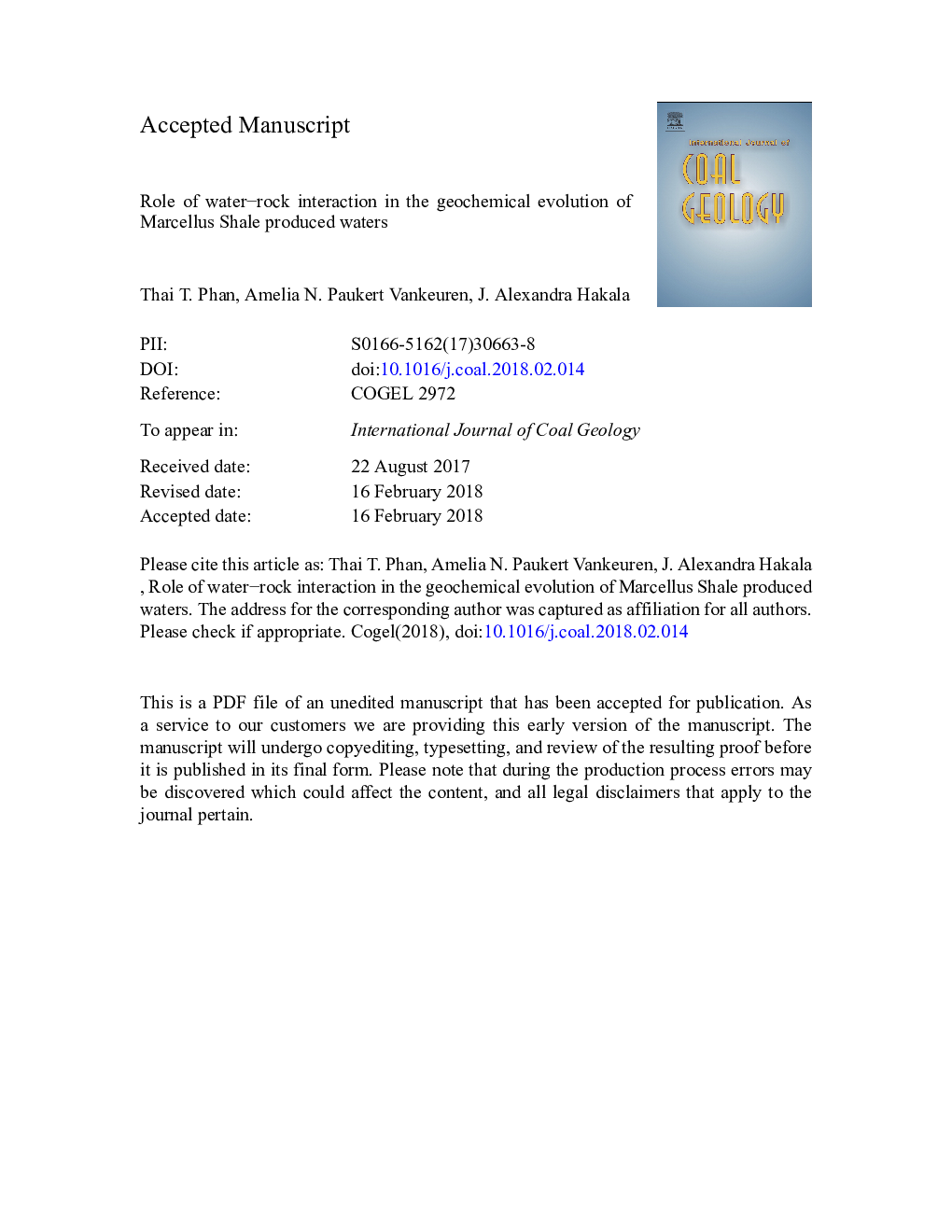| کد مقاله | کد نشریه | سال انتشار | مقاله انگلیسی | نسخه تمام متن |
|---|---|---|---|---|
| 8123408 | 1522512 | 2018 | 56 صفحه PDF | دانلود رایگان |
عنوان انگلیسی مقاله ISI
Role of waterârock interaction in the geochemical evolution of Marcellus Shale produced waters
دانلود مقاله + سفارش ترجمه
دانلود مقاله ISI انگلیسی
رایگان برای ایرانیان
کلمات کلیدی
موضوعات مرتبط
مهندسی و علوم پایه
علوم زمین و سیارات
زمین شناسی اقتصادی
پیش نمایش صفحه اول مقاله

چکیده انگلیسی
In this study, we explored Li, Sr, and U as geochemical tracers of ionâexchange and mineral dissolution reactions occurring during a series of flow-through laboratory experiments designed to evaluate mineral reactions occurring in shale reacted with hydraulic fracturing fluid (HFF). The experiments, reported in detail in a separate study (Paukert Vankeuren et al., 2017), were designed to emulate shut-in conditions (period after hydraulic fracturing but before production when HFF remains in the reservoir to allow for opening of new fractures for hydrocarbon recovery) for Marcellus Shale undergoing hydraulic fracturing in southwestern Pennsylvania, USA. In the companion study presented here, effluent samples from the core flood experiments were analyzed for changes in Li isotopes (δ7Li), radiogenic Sr isotopes (εSrSW), and U concentration as possible unique geochemical tracers to indicate water-rock reaction. Experimental and reactive transport modeling results demonstrated that the peak of U in experimental effluents is derived from dissolution of U-containing calcite, which may explain the pulse of U observed in produced water collected from hydraulically fractured Marcellus Shale on the first day of flowback. Experimental results also showed that changes in δ7Li values and εSrSW from the flow-through experiments differ from values measured in a time series of produced waters from Marcellus Shale gas wells. Thus, although ionâexchange and mineral dissolution and precipitation reactions result in an observable change in Sr isotope signals in laboratory experiments, this change may not be identifiable in produced waters in the field due to complications associated with geologic heterogeneity and overprinting of other signals such as fluid mixing and transport. While U shows some promise as a tracer of HFF-shale reactions, particularly carbonate dissolution, it may be necessary to continue searching for other tracers present in produced waters to aid in elucidating in situ water-rock reactions of interest.
ناشر
Database: Elsevier - ScienceDirect (ساینس دایرکت)
Journal: International Journal of Coal Geology - Volume 191, 15 April 2018, Pages 95-111
Journal: International Journal of Coal Geology - Volume 191, 15 April 2018, Pages 95-111
نویسندگان
Thai T. Phan, Amelia N. Paukert Vankeuren, J. Alexandra Hakala,